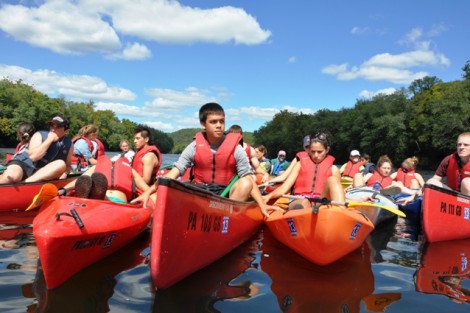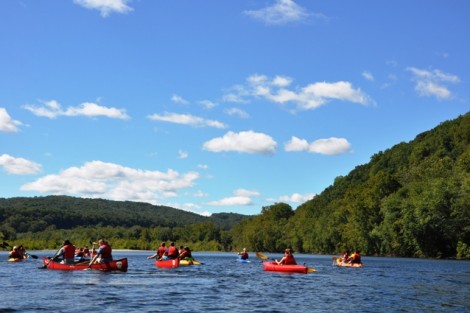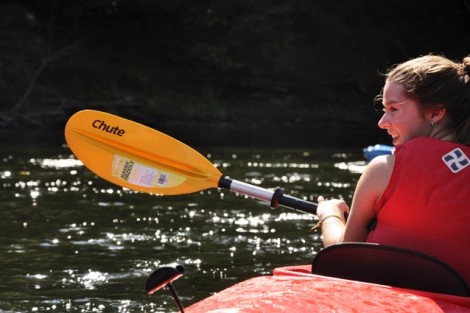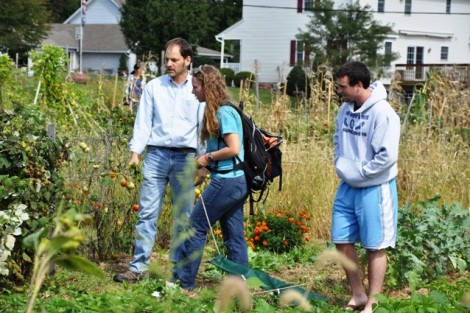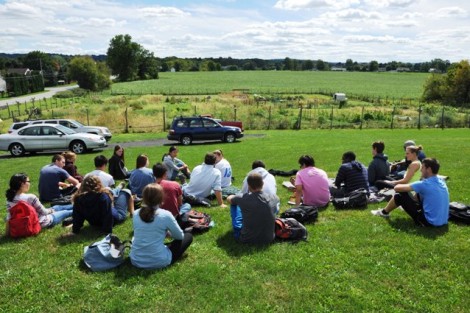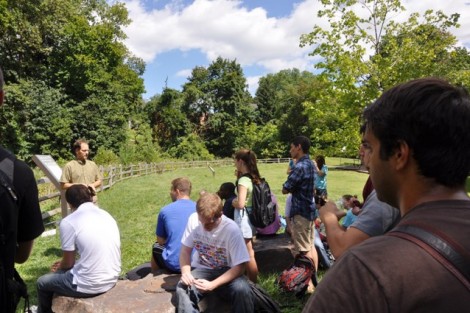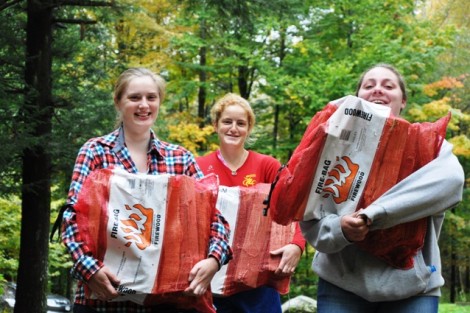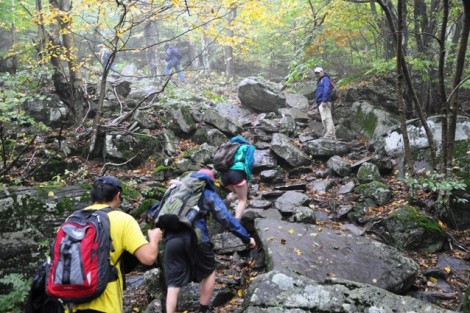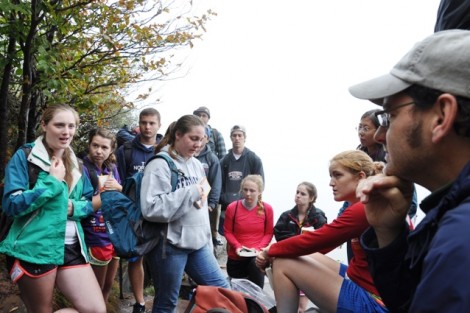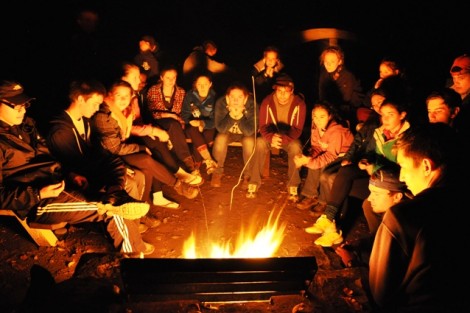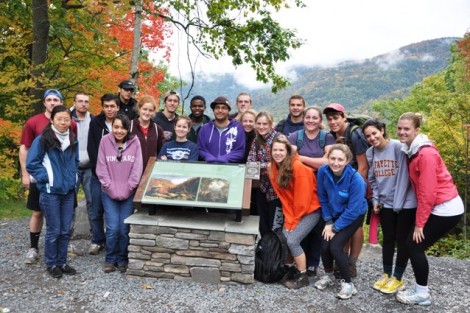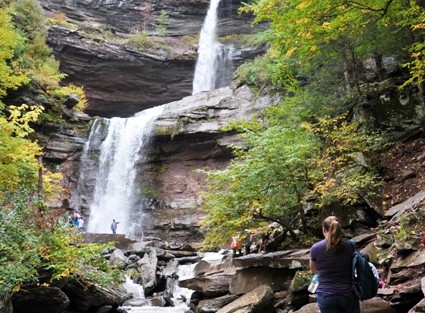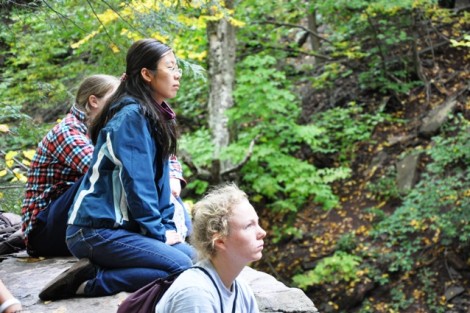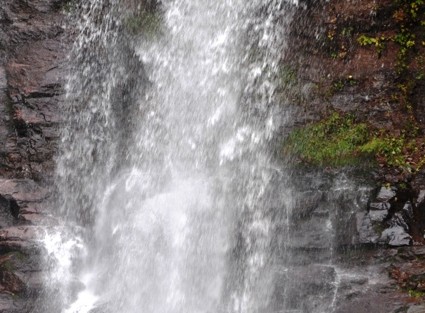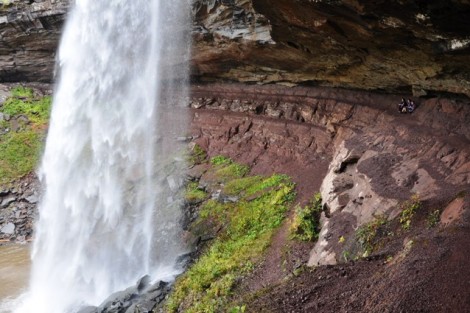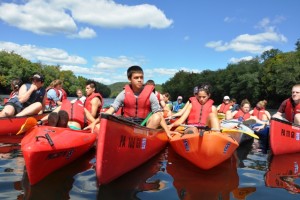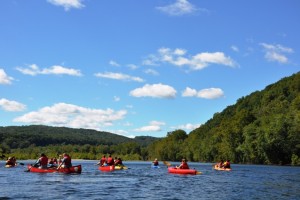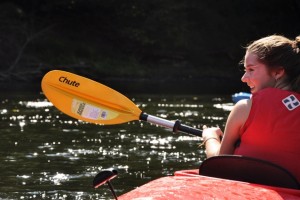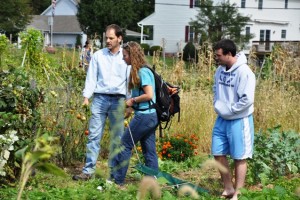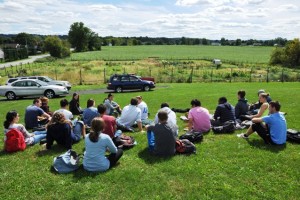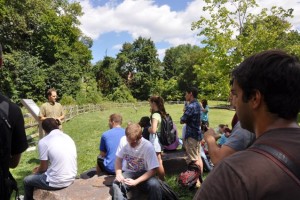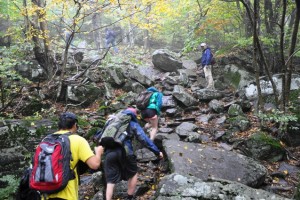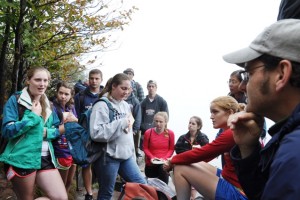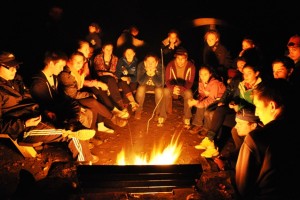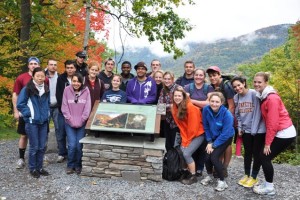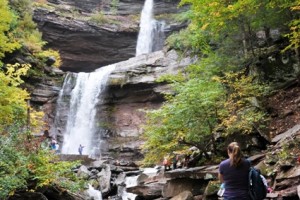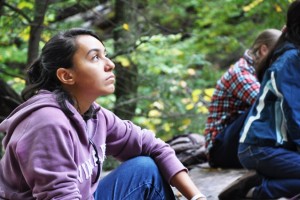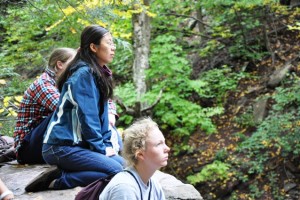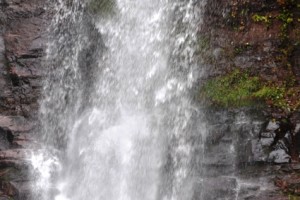By Michele Tallarita ’12
Sandy Ma ’13 (Nanjing, China) admits to being a little surprised when, for homework, she had to read about policy studies, poetry, and environmental data—all for the same class.
But such is the nature of Cultures of Nature, an interdisciplinary course offered through the American studies program. Taught this semester by David Brandes, associate professor of civil and environmental engineering, and Andy Smith, associate professor of English and chair of film and media studies, the course peers through perspectives from both the sciences and the humanities to examine the American relationship with nature.
View and share more images of the course trips on Flickr
The goal of the course is to unpack words like “nature,” “wilderness,” “environmental,” and “green” by investigating how Americans have historically defined them and how they define them today. Class texts include nature and environmental writings, films and visual culture, and the wilderness itself: Students are required to hike, kayak, and camp as part of the course. In this way, they become personally connected to the very places and phenomena about which they are reading.
This is the second time Brandes and Smith are teaching Cultures of Nature. This semester, the class has already gone paddling down the Delaware River and camped overnight in the Catskill Mountains. November will bring trips to Hawk Mountain Sanctuary, the local Cabela’s outdoor recreation store, and New York City. (In addition to experiencing nature, the course also focuses on experiencing “constructions” of nature.) Explorations of Lafayette’s own campus are also a big part of the class. Cell phones are not permitted on the trips.
“In addition to students becoming familiar with some of the key voices in American nature writing across the past 200 years that remain highly relevant today, I would like to see them develop a much more critical awareness of the ways in which nature is portrayed, perceived, and used in their own current-day culture,” says Brandes. “Just as important, they should be developing a recognition of the diversity, complexity, and interconnectedness of the natural world around them, not just in national parks and wilderness areas, but right here in their own backyards.”
The interdisciplinary nature of the course arises from both professors’ desire to see the students thinking in more complex ways.
“We try to enact a productive and enlivening bridge between the sciences and the humanities, the creation of a space that puts different types of specialists into the conversation with each other so that [students] can see the limitations of narrow interpretations and the rich potential of more complex perspectives,” says Smith, who hopes to get students to take more risks.
“We need to be less afraid of being wrong or imperfect and get busy and even messy in our learning,” says Smith. “During our paddling and hiking, when we cook and care for each other in the mountains, these things break us down some and that’s good.”
Ma, a civil engineering major, has loved seeing the concepts she reads about for class come to life in her outdoor experiences.
“We learned about the paintings of the Hudson River School in class and discussed the idea of the picturesque: the ruggedness and irregularity in nature,” she says. “Then we went to the Catskills and my direct experience allowed me to understand the idea of the picturesque three-dimensionally.”
She noted that the camping trip, her first, made her feel as if she had traveled back in time.
Alex Pong ’13 (Houston, Texas), a biology major, can’t help but point out that the content of the course is not its only interdisciplinary aspect. The students themselves come from majors all across the board.
“We all come from different academic backgrounds, and our class discussions really allow us the opportunity to explore the topics from different approaches. I love this aspect and believe it’s vital to the course,” he says.
For him, the course has been about learning to appreciate nature in a broader context.
“Nature doesn’t have to be strictly in national forests,” he says. “It’s on our campus, too—it’s all around us.”
